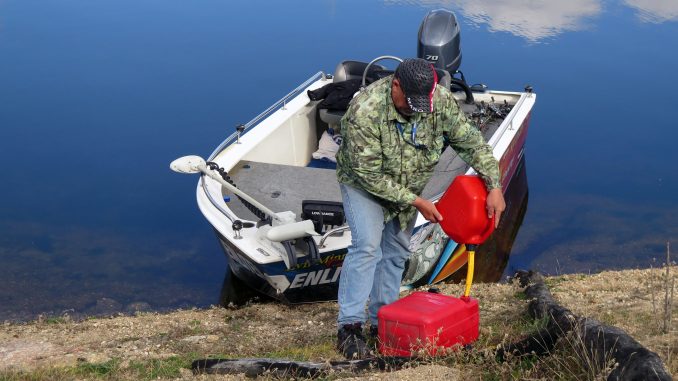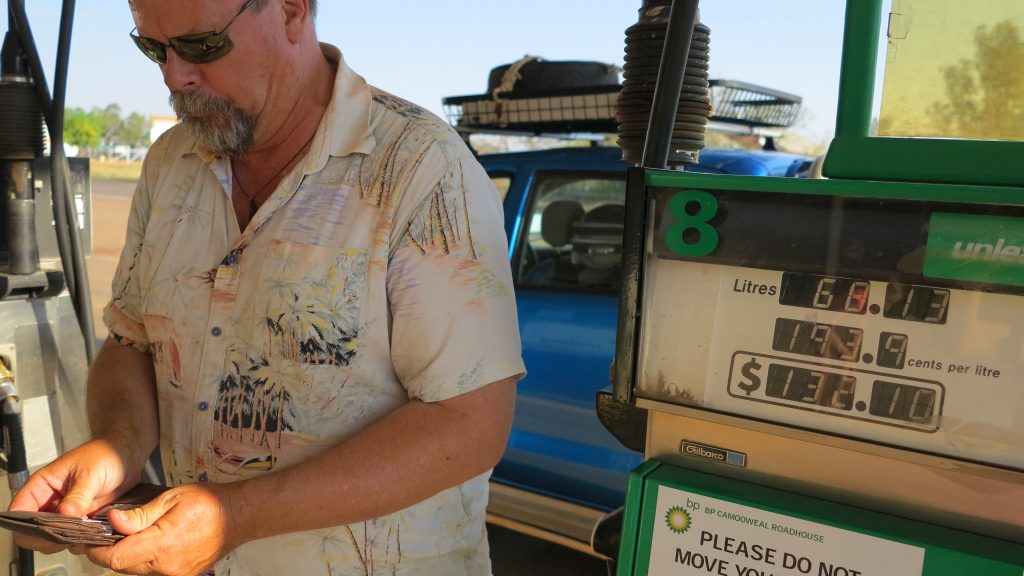
by Steve ‘Starlo’ Starling •
Too many people take the safety aspects involved with handling boat fuel for granted… potentially at their peril!
I don’t mind admitting that I’m quietly terrified of petrol, especially in and around boats. I think about the potential for catastrophe almost every time I turn the ignition key or refuel my vessel. Yet the explosive and highly flammable properties of volatile fuels and their invisible vapours pose a threat that I believe far too many boaties fail to consider. Some people may regard my extreme wariness in this regard as something close to paranoia, but the fact remains that you rarely get a second chance if something goes badly wrong in this critical department.
I firmly believe that the dangerous properties of boat fuel represent a subject area we all need to take more seriously, particularly when dealing with a petrol-powered craft. Diesel fuel is, by nature, considerably safer and less volatile than petrol, and there’s some truth in the old chestnut that you can actually extinguish a burning match in a cup of diesel, at least at room temperature. It’d be a very brave (or stupid) person who’d try the same trick with a cup of petrol!
Petrol-powered boats with built-in, below-floor fuel storage, or even portable tote tanks placed in holds, bilges or partially sealed compartments, present particular risks. Spillages, overflow and fumes vented from these concealed tanks, but constrained within the hull or superstructure of the vessel, can create what is effectively a powerful time bomb just waiting for a spark in order to ignite. The right (or wrong) mix of air and petrol vapour is an extremely explosive cocktail, even more dangerous and unstable than the liquid form of the fuel. The fact that these same areas below decks or inside closed compartments also typically house batteries, wiring and other electronic components compounds the issue.
I’ve witnessed a relatively minor demonstration of this explosive phenomenon and it’s something I won’t easily forget. Some years ago, a mate and I were competing in an ABT BREAM tournament on Sydney Harbour. Unknown to us, there was a small fuel leak under the cowling of his 90hp outboard. This tiny leak would likely have gone unnoticed and not caused any problems, were it not for the intense heat of the summer day and the fact that we fished in one particularly still and sheltered bay for well over an hour. The fact that the motor was fitted with a heavy cover may have compounded the issue by limiting natural ventilation.
As we stowed the bow-mounted electric motor and made ready to move to another spot, I casually reached across and turned the ignition key. The resounding bang that resulted from the instantaneous combustion of a small cloud of fuel vapour launched the heavy fiberglass cowling and its canvas cover at least 25m into the sky and had waterside residents rushing onto their balconies in alarm.
A small blaze was also ignited on the exposed powerhead of the outboard, but a quick squirt with the chemical fire extinguisher took care of this. My mate and I were shaken but unhurt. Had the vapour build-up been larger, or occurred in a closed compartment below decks, the outcome may have been very different indeed.
These days, if my boat hasn’t been used for a while, I always lift the hatches, smell for fuel and allow some airflow before switching over the battery isolator and cranking the motor for the first time. It’s a good habit to get into.
There are other well-established protocols for dealing with fuel in and around boats, including strong advice about not filling tote tanks or other portable containers while they remain within the vessel. Always lift them out and place them on the ground to earth these containers, greatly reducing the risk of tiny sparks that might be caused by static electricity.
For the same reason, make sure the nozzle of the fuel hose or funnel remains in constant contact with the lip of the filler throughout the fueling procedure. Of course, you should also avoid using mobile phones and other electronic devices while fueling. It goes without saying (or should!) that smoking anywhere within a 20m+ radius is a complete no-no!
You’ll find plenty of great advice about all of this stuff online. Maritime Safety Victoria have a very handy video on the subject. You can track it down via their website.
The fuel that drives our boats is something we all tend to take for granted, but there are so many things that can go wrong in this department, from contaminated fuel that can stop or even damage motors, to the very real risks of fire and explosions on board. Think about the juice in your tanks, and don’t become a fuel fool… or a statistic.





